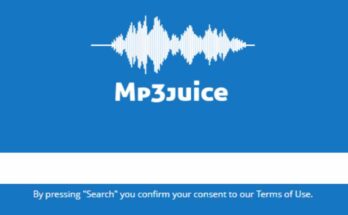Introduction to SSIS 816
Welcome to the world of SSIS 816 – your gateway to seamless data integration and transformation! Whether you’re a seasoned developer or just dipping your toes into the realm of ETL tools, SSIS 816 has something for everyone. In this blog post, we will unravel the mysteries surrounding SSIS 816, from its inception to mastering its powerful features. Get ready to demystify SSIS 816 and unlock its full potential!
What is SSIS?
SSIS, also known as SQL Server Integration Services, is a powerful data integration tool developed by Microsoft. It allows users to extract, transform, and load data from various sources into different destinations. In simpler terms, SSIS helps in moving and transforming data efficiently within an organization.
With SSIS, users can automate repetitive tasks like importing or exporting data between databases or applications. This automation not only saves time but also reduces the chances of errors that may occur during manual processes.
One of the key advantages of using SSIS is its user-friendly interface that enables both technical and non-technical users to design and manage complex ETL processes without writing extensive code. Additionally, SSIS provides a wide range of built-in transformations and tasks to streamline data workflows effectively.
Understanding what SSIS is and how it can benefit your organization is essential for efficient data management and integration processes.
History and evolution of SSIS 816
SSIS, or SQL Server Integration Services, has a rich history that dates back to its initial release in 2005. Over the years, SSIS has evolved into a powerful tool for data integration and ETL (extract, transform, load) processes. With each new version, Microsoft introduced enhancements and features to meet the growing demands of data management.
The latest iteration of SSIS – version 816 – continues this tradition by providing users with advanced capabilities for handling complex data workflows efficiently. From seamless connectivity with various data sources to robust transformation options, SSIS 816 empowers organizations to streamline their data integration tasks like never before.
With an eye on performance optimization and user experience improvements, SSIS 816 represents a significant milestone in the evolution of this popular data integration tool. Whether you are a seasoned professional or just starting with SSIS, exploring its history can offer valuable insights into how far it has come in enabling businesses to achieve their data integration goals effectively.
Key Features and Benefits of SSIS 816
SSIS 816 comes packed with a plethora of key features and benefits that make it a top choice for data integration tasks. One standout feature is its user-friendly interface, making it easy for both beginners and experienced users to navigate through the tool effortlessly.
Another significant benefit of SSIS 816 is its robust connectivity options, allowing seamless integration with various data sources such as databases, cloud services, and flat files. This flexibility ensures that users can work with diverse data types without any hassle.
Moreover, SSIS 816 offers advanced workflow capabilities like control flow and data flow components, enabling users to design complex ETL processes efficiently. These features empower users to automate repetitive tasks and streamline their data integration workflows effectively.
Additionally, the built-in monitoring and logging functionalities in SSIS 816 provide real-time insights into job executions, ensuring better visibility and control over the entire process. These key features contribute to enhancing productivity and efficiency in managing data integration projects using SSIS 816.
How to get started with SSIS 816
Are you ready to dive into the world of SSIS 816 but not sure where to start? Getting started with SSIS 816 is easier than you think. The first step is to familiarize yourself with the interface and tools available. Take some time to explore the various components and features within SSIS 816.
Next, consider taking online tutorials or courses that provide hands-on experience with SSIS 816. These resources can help you build a solid foundation and gain practical skills in using this data integration tool effectively.
Don’t be afraid to experiment and practice on sample datasets. The best way to learn is by doing, so try creating simple ETL (Extract, Transform, Load) processes using SSIS 816. This hands-on approach will boost your confidence and understanding of how SSIS works.
As you progress, don’t hesitate to seek guidance from forums or communities dedicated to SSIS users. Connecting with others who have experience can provide valuable insights and solutions as you continue your journey with SSIS 816.
Common uses and applications of SSIS 816
SSIS 816 is a versatile tool that finds applications in various industries and scenarios. One common use of SSIS 816 is data warehousing, where it helps in extracting, transforming, and loading data into a centralized repository for analysis.
Another popular application of SSIS 816 is in ETL (extract, transform, load) processes. It simplifies the task of moving data between different systems efficiently. Companies often rely on SSIS 816 to automate repetitive tasks like transferring files between servers or databases.
Moreover, SSIS 816 is widely used for real-time data integration tasks such as syncing data from multiple sources in near real-time. This capability enables businesses to make informed decisions based on up-to-date information.
The flexibility and scalability of SSIS 816 make it an indispensable tool for organizations looking to streamline their data integration processes seamlessly.
Tips for mastering SSIS 816
When it comes to mastering SSIS 816, practice is key. Take the time to explore different features and functionalities within the tool to understand its full potential.
Don’t be afraid to experiment with various data integration scenarios. The more hands-on experience you have, the more confident you’ll become in using SSIS 816 effectively.
Utilize online resources such as tutorials, forums, and blogs to deepen your understanding of advanced techniques and best practices in data integration.
Stay updated with the latest updates and releases from Microsoft regarding SSIS 816. Continuous learning will help you stay ahead of the curve in optimizing your data integration processes.
Networking with other professionals in the field can also provide valuable insights and tips on how they have mastered SSIS 816 in their own workflows.
Troubleshooting and common challenges with SSIS 816
Running into issues while using SSIS 816 is not uncommon, but understanding how to troubleshoot them can make a huge difference in your experience. One common challenge users face is dealing with package failures due to data mismatches or transformations errors. To tackle this, double-check your mappings and use data viewers to inspect the flow of information within your packages.
Another issue that may arise is slow performance during data extraction, transformation, or loading processes. This could be caused by inefficient query designs or lack of optimization in your workflows. Consider optimizing your SQL queries and adjusting buffer sizes to enhance performance.
Additionally, connectivity problems with external sources like databases or APIs can hinder the smooth operation of SSIS 816 projects. Ensuring proper credentials, firewall permissions, and network configurations are crucial for seamless data integration.
By identifying these common challenges early on and implementing effective troubleshooting strategies, you can maximize the efficiency and effectiveness of SSIS 816 in your data integration tasks.
Comparison with other data integration tools
When comparing SSIS 816 with other data integration tools, it stands out for its robust functionality and versatile capabilities. Unlike some tools that may have limitations in terms of scale or flexibility, SSIS offers a comprehensive platform for handling complex data integration tasks efficiently.
One key advantage of SSIS 816 is its seamless integration with other Microsoft products and services, providing a cohesive ecosystem for users familiar with the Microsoft suite. This can streamline workflows and enhance productivity by leveraging existing knowledge and resources within the organization.
Furthermore, the user-friendly interface of SSIS makes it accessible to both novice users and seasoned professionals alike. Its intuitive design allows for quick adoption and implementation without requiring extensive training or specialized expertise.
When considering data integration tools, SSIS 816 proves to be a reliable choice for organizations seeking a powerful solution that combines performance, scalability, and ease of use.
Conclusion
SSIS 816 is a powerful tool that can revolutionize the way you handle data integration and workflow automation. With its robust features, flexibility, and ease of use, SSIS 816 stands out as a top choice for businesses looking to streamline their processes and maximize efficiency.
By understanding the history, key features, and common uses of SSIS 816, you are well on your way to mastering this versatile tool. Remember to leverage resources like tutorials, forums, and online communities to troubleshoot any challenges you may encounter along the way.
While there are other data integration tools available in the market, SSIS 816 offers unique advantages that set it apart from the competition. Its seamless integration with SQL Server and Visual Studio makes it a preferred option for many professionals in the field.
By delving into SSIS 816 and honing your skills with practice and experimentation, you can unlock new possibilities for data management and processing within your organization. Embrace this technology-driven era with confidence as you harness the power of SSIS 816 to drive innovation in your workflows.




